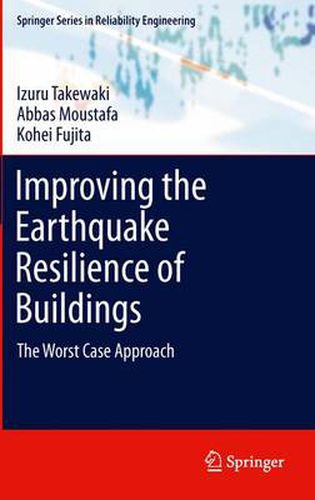Readings Newsletter
Become a Readings Member to make your shopping experience even easier.
Sign in or sign up for free!
You’re not far away from qualifying for FREE standard shipping within Australia
You’ve qualified for FREE standard shipping within Australia
The cart is loading…






This title is printed to order. This book may have been self-published. If so, we cannot guarantee the quality of the content. In the main most books will have gone through the editing process however some may not. We therefore suggest that you be aware of this before ordering this book. If in doubt check either the author or publisher’s details as we are unable to accept any returns unless they are faulty. Please contact us if you have any questions.
Engineers are always interested in the worst-case scenario. One of the most important and challenging missions of structural engineers may be to narrow the range of unexpected incidents in building structural design. Redundancy, robustness and resilience play an important role in such circumstances. Improving the Earthquake Resilience of Buildings: The worst case approach discusses the importance of worst-scenario approach for improved earthquake resilience of buildings and nuclear reactor facilities.
Improving the Earthquake Resilience of Buildings: The worst case approach consists of two parts. The first part deals with the characterization and modeling of worst or critical ground motions on inelastic structures and the related worst-case scenario in the structural design of ordinary simple building structures. The second part of the book focuses on investigating the worst-case scenario for passively controlled and base-isolated buildings. This allows for detailed consideration of a range of topics including:
A consideration of damage of building structures in the critical excitation method for improved building-earthquake resilience,
A consideration of uncertainties of structural parameters in structural control and base-isolation for improved building-earthquake resilience, and
New insights in structural design of super high-rise buildings under long-period ground motions.
Improving the Earthquake Resilience of Buildings: The worst case approach is a valuable resource for researchers and engineers interested in learning and applying the worst-case scenario approach in the seismic-resistant design for more resilient structures.
$9.00 standard shipping within Australia
FREE standard shipping within Australia for orders over $100.00
Express & International shipping calculated at checkout
This title is printed to order. This book may have been self-published. If so, we cannot guarantee the quality of the content. In the main most books will have gone through the editing process however some may not. We therefore suggest that you be aware of this before ordering this book. If in doubt check either the author or publisher’s details as we are unable to accept any returns unless they are faulty. Please contact us if you have any questions.
Engineers are always interested in the worst-case scenario. One of the most important and challenging missions of structural engineers may be to narrow the range of unexpected incidents in building structural design. Redundancy, robustness and resilience play an important role in such circumstances. Improving the Earthquake Resilience of Buildings: The worst case approach discusses the importance of worst-scenario approach for improved earthquake resilience of buildings and nuclear reactor facilities.
Improving the Earthquake Resilience of Buildings: The worst case approach consists of two parts. The first part deals with the characterization and modeling of worst or critical ground motions on inelastic structures and the related worst-case scenario in the structural design of ordinary simple building structures. The second part of the book focuses on investigating the worst-case scenario for passively controlled and base-isolated buildings. This allows for detailed consideration of a range of topics including:
A consideration of damage of building structures in the critical excitation method for improved building-earthquake resilience,
A consideration of uncertainties of structural parameters in structural control and base-isolation for improved building-earthquake resilience, and
New insights in structural design of super high-rise buildings under long-period ground motions.
Improving the Earthquake Resilience of Buildings: The worst case approach is a valuable resource for researchers and engineers interested in learning and applying the worst-case scenario approach in the seismic-resistant design for more resilient structures.